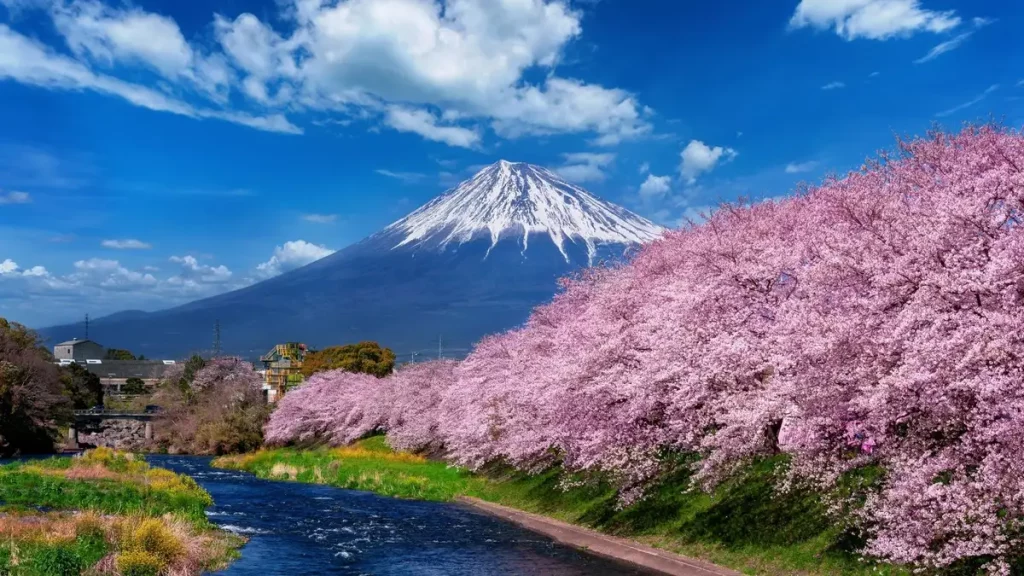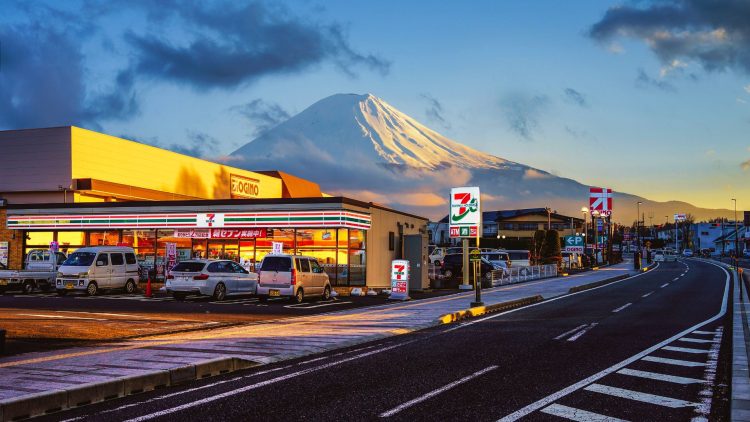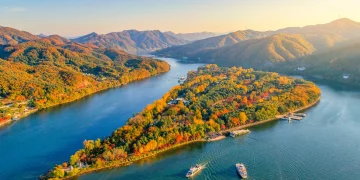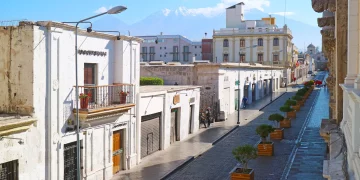The Rise of Rural Wanderlust
In 2024, something unexpected happened in Japan’s tourism narrative. While major cities like Tokyo and Kyoto remained staples on global travel itineraries, the real buzz came from places previously overlooked: rice fields, fishing hamlets, tea plantations, and mountain villages. The Gen Z cohort—characterized by their preference for authenticity, sustainability, and local immersion—was increasingly drawn to Japan’s countryside. Instead of snapping selfies at Shibuya Crossing, they were hand-rolling soba noodles with farmers in Shikoku, or sipping roasted tea with host grandmothers in Noto Peninsula. This shift wasn’t just a footnote in travel trends—it reflected deeper generational values shaping a new tourism paradigm.
Unlike previous waves of international visitors lured by neon skylines or cherry blossom Instagram moments, Gen Z travelers in 2024 were opting for destinations that offered quiet, connection, and cultural depth. And Japan’s rural heartland, with its deep respect for heritage and seasonal rhythms, delivered just that. In regions like Tottori, Ehime, and Toyama, demand for minshuku (family-run guesthouses), tea-picking retreats, and slow-food experiences surged. Airbnb data from spring 2024 showed a 68% increase in countryside stays among guests aged 20–30, while Japan Rail’s local lines saw a spike in young pass usage across lesser-known rural prefectures.
Beyond the City: Why Gen Z is Trading Harajuku for Hand-Harvesting
So what exactly is behind this youth-fueled pivot from cosmopolitan chaos to countryside calm? At its core lies a generational hunger for meaning over mass consumption. Gen Z travelers, born between the late 1990s and early 2010s, have come of age amid climate anxiety, social dislocation, and hyper-digital saturation. In travel, they’re not looking to escape reality but to engage more deeply with it—and Japan’s countryside offers an ideal canvas for such engagement.
In the rural corners of Shikoku, Gen Z visitors can participate in “green tourism” programs, where they stay with local farmers and help plant rice or harvest shiitake mushrooms. In return, they’re invited into family dinners, hear ancestral folktales, and learn about seasonal rituals tied to the Shinto calendar. It’s not curated for tourists—it’s the real pace of life. That’s exactly the appeal.
In 2024, programs like “Chiiki Stay” in the inland valleys of Kochi saw international applications double compared to 2023. Young travelers, many of them digital nomads or creative freelancers, traded 5-star amenities for tatami mats and miso-making. Part of the appeal is the contrast: in an always-on world, rural Japan remains defiantly slow. A Gen Z traveler from London described her homestay in Noto Peninsula as “the first time I’ve had a meal made entirely from food grown 100 meters away. I didn’t check my phone for hours. It felt like a dream.”
Shikoku and Noto: New Icons of Cultural Immersion
Among the most talked-about destinations for rural immersion are Shikoku and the Noto Peninsula—both formerly considered remote even by Japanese standards. In Shikoku’s Iya Valley, a surge in “heritage hiking” drew thousands of young visitors tracing the paths of feudal pilgrims along moss-covered bridges and terraced mountain trails. Instead of checking into hotels, these visitors booked stays in 200-year-old farmhouses restored under regional preservation efforts.
In the town of Tsurugi, local government-sponsored cultural exchange programs paired visitors with elder residents who taught them to weave straw sandals or prepare regional dishes like tarai udon. The connections forged weren’t fleeting. Some travelers extended their stays for months, becoming semi-residents who volunteered in local schools or helped maintain community gardens.
Similarly, the Noto Peninsula—known for its rugged coastline and centuries-old fishing culture—became a haven for travelers seeking “quiet luxury.” Not luxury in terms of price or polish, but in the richness of experience: seaweed foraging at dawn, soaking in seaside rotenburo baths, or learning boat-making techniques passed down for generations. Community-run inns like “Kaze no Sumika” offered package stays that included calligraphy lessons, fish market tours, and family-style meals with resident elders.
In 2024, TikTok and Instagram played a surprising role in amplifying this movement. Viral videos of foreign travelers planting tea alongside 90-year-old farmers, or cleaning shrines in mountain hamlets, reshaped perceptions of what “cool” travel looks like. For Gen Z, it wasn’t about the photo—but the story behind the photo.

Escaping the Overcrowded Narrative of Japan
Tokyo and Kyoto, while still iconic, began to face tourism fatigue by mid-2024. Overcrowding at major attractions like Fushimi Inari or Shibuya Sky made headlines, prompting both travelers and local officials to seek alternatives. Gen Z led the migration toward lesser-known destinations, fueled by both a desire to avoid the beaten path and a deeper respect for cultural preservation.
This movement was supported by national and local policies. The Japan Tourism Agency expanded its “Hometown Tourism” initiative, offering subsidies for international visitors who booked accommodations in low-density rural areas. JR also introduced the “Digital Youth Rail Pass,” which gave travelers under 30 unlimited access to local rail lines for a fixed monthly fee. With infrastructure and incentives aligning, the countryside opened its doors wide—and Gen Z walked in enthusiastically.
Airbnb partnered with several rural prefectures to promote “agri-tourism bundles” and “craft village homestays,” featuring experiences like bamboo dyeing, charcoal-making, or washi paper production. According to internal Airbnb figures, listings in Japan’s rural areas grew 110% year-over-year in 2024, and 58% of new bookings were made by users under 35.
Cultural Exchange in a Post-Globalized World
There’s also a broader cultural narrative at play. Post-pandemic, the idea of global travel shifted from bucket lists to belonging. Young travelers increasingly seek not to consume cultures but to temporarily be part of them. In this sense, Japan’s countryside—where traditions are still lived and not just staged—offers exactly the type of experience they crave.
One traveler from Toronto who spent two weeks in the mountainous town of Gujo Hachiman described her stay as “an education in how to live well with little.” She learned to preserve seasonal vegetables, attended Obon dances, and helped her host family prepare mochi for a local ceremony. What stood out wasn’t the novelty, but the sense of connection—to place, people, and purpose.
In interviews conducted by the Nippon Foundation, many local residents said they were surprised but pleased by the wave of young, foreign visitors. Unlike the rapid influx of mass tourism, these Gen Z guests often came with curiosity, humility, and a willingness to learn. The result was not just economic benefit—but real cultural exchange.
The Future of Japanese Travel: Local, Slow, and Personal
As 2024 drew to a close, Japan’s countryside stood transformed—not by development, but by attention. And it wasn’t just a moment. Travel platforms have already begun tailoring long-stay cultural immersion packages for 2025. Universities are designing study-abroad programs in collaboration with rural temples and community co-ops. Even Japanese youth, seeing their own heritage refracted through the lens of foreign enthusiasm, are rediscovering the value of rural life.
This resurgence is not without its challenges. Infrastructure in many rural areas remains limited, and there are concerns about over-tourism replicating the very pressures that drove people away from the cities. But if managed wisely, this rural renaissance could revitalize aging regions while keeping their identities intact.
For Gen Z, the countryside represents more than a travel trend. It’s a philosophy: go slow, go deep, go local. In Japan’s quietest places, they are finding what many modern cities cannot offer—space to breathe, to learn, and to belong.





















